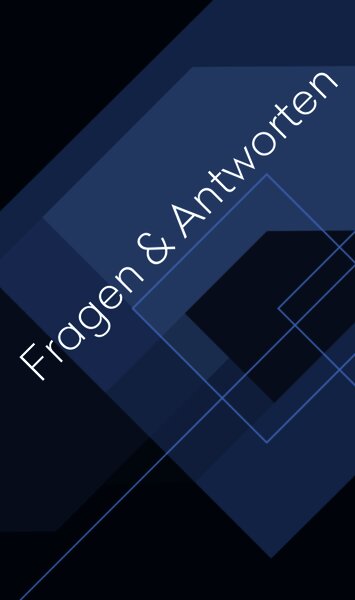This customer information is intended to help you better understand the newly introduced recipient verification process and make it easier for you to use it in the future.
Overview
- What is the recipient verification?
- Why does the recipient verification exist?
- When does the recipient verification apply?
- In which cases is the recipient verification available?
- Is recipient verification only possible in online banking?
- How exactly does recipient verification work?
- What are the results of the recipient verification?
- What do I do if the IBAN almost matches or does not match the name of the payee?
- Why do I get a message that the IBAN does not match the name of the payee? I know the payee or it was successful last time.
- What do I do if the payee verification could not be carried out?
- Can I instruct my bank not to carry out a recipient check for my transfer?
- Can I instruct my bank not to respond to a recipient verification request for my account?
- Can I instruct my bank to carry out a recipient verification in all cases?
- What does the recipient verification cost?
- Will anything change for my standing orders?
- What happens to my transfer templates?
- Which countries are members of the European Union?
- Which countries belong to the European Union?
- What about Iceland, Liechtenstein and Norway?
What is the recipient verification?
For a transfer, you always enter the name of the payee and their IBAN. These details are compared with the data of the destination account during the recipient check. You will be shown the result. You can then decide whether you want to approve the transfer.
Why does the recipient check exist?
The legislator wants to avoid transfers to the wrong people - whether due to incorrect entries or fraud. To this end, recipient verification is intended to detect errors relating to the payee.
When will the recipient verification be introduced?
Recipient verification will be mandatory for all banks in the SEPA area from October 9, 2025 (see "In which cases is recipient verification mandatory?"). As a client of Hauck Aufhäuser Lampe, you can already carry out the recipient verification from October 5, 2025.
In which cases is the recipient verification available?
The recipient verification is available for:
- SEPA credit transfers and SEPA real-time credit transfers
- in online banking
- between payment accounts
- from October 2025 between the euro countries of the European Union
- from July 2027 within the entire European Union.
In addition, Iceland, Liechtenstein and Norway can also adopt the legal requirements for recipient verification (see "What about Iceland, Liechtenstein and Norway?").
Is recipient verification only possible in online banking?
No. If you hand in a transfer voucher at the counter, the customer advisor will carry out the recipient verification directly.
How exactly does the recipient check work?
The legal basis for the Single Euro Payments Area (SEPA) is EU Regulation 260/2012, which was supplemented by EU Regulation 2024/886 of March 13, 2024 to include specifications for recipient verification. Based on this, there is a standardised Europe-wide procedure for technical processing, the "Verification Of Payee Scheme" of the European Payments Council, see Verification Of Payee Scheme Rulebook.
To verify the recipient, the payer's bank requests the following data from the payee's bank:
- Bank Identifier Code (BIC) of the payer's bank
- Name of the payee
- IBAN of the payee
- Bank identification code (BIC) of the payee's bank
- Request reference of the payer's bank
- Time of the request
The payee's bank responds with the following data:
- Bank Identifier Code (BIC) of the payer's bank
- Request reference of the payer's bank
- Time of the response
- Result of the check (see "What are the results of the recipient check?")
What are the results of the recipient check?
- IBAN matches the name of the payee
- IBAN almost matches the name of the payee (the correct name is also given)
- IBAN does not match the name of the payee
What do I do if the IBAN almost matches or does not match the payee's name?
You can decide for yourself whether you want to approve the transfer. If you do, the money may go to the wrong person.
Why do I get a message that the IBAN does not match the name of the payee? I know the payee or it was successful last time.
Sometimes you know the payee by the name on the store sign, for example the pharmacy "Zum goldenen Hirsch" or the hairdressing salon "Kirchallee". However, a bank manages the account under the name of the company owner. These cases can usually be cleared up if you contact the payee.
What do I do if the recipient verification could not be carried out?
Sometimes the recipient verification cannot be carried out due to technical problems, which are resolved after a certain amount of time. Try the process again later.
There are also cases where the recipient verification is not possible, for example if the target account is not a payment account or if the payee's bank does not support this verification or is located outside the European Union (see "In which cases is the recipient verification available?").
Can I instruct my bank not to carry out a recipient verification for my transfer?
Only companies can do this for collective transfers. Banks are legally obliged to carry out a recipient check for consumers.
Can I instruct my bank not to respond to a recipient verification request for my account?
Banks are required by law to respond to recipient verification requests in the cases listed under "In which cases is recipient verification available?".
Can I instruct my bank to carry out a recipient verification in all cases?
Banks may only carry out the recipient verification in certain cases, see "In which cases is the recipient verification available?".
What does the recipient verification cost?
Neither the payer nor the payee pay for the recipient verification.
Will anything change for my standing orders?
If you enter a new standing order or change an existing standing order, a recipient check will be carried out.
What happens to my transfer templates?
You can use your transfer templates as usual.
Why are my bank's transfer conditions changing?
The legal regulations on recipient verification will be included in the transfer conditions.
What special features apply to companies?
There is information for corporate customers on the implementation of recipient verification in the EBICS procedure.
Which countries belong to the euro countries of the European Union?
Austria, Belgium, Croatia, Cyprus, Estonia, Finland, France, Germany, Greece, Ireland, Italy, Latvia, Lithuania, Luxembourg, Malta, Netherlands, Portugal, Slovakia, Slovenia, Spain.
Which countries belong to the European Union?
Austria, Belgium, Bulgaria, Croatia, Cyprus, Czech Republic, Denmark, Estonia, Finland, France (including French Guiana, Guadeloupe, Martinique, Mayotte, Réunion), Germany, Greece, Hungary, Ireland, Italy, Latvia, Lithuania, Luxembourg, Malta, Netherlands, Poland, Portugal, Romania, Slovakia, Slovenia, Spain, Sweden.
What about Iceland, Liechtenstein and Norway?
These countries are part of the European Economic Area and can each decide whether to apply European laws. As a result, they act as part of the European Union. If Norway, for example, decides in favor of recipient verification, this will be carried out automatically for transfers to and from Norway.








